Emu
Dromaius novaehollandiae
-
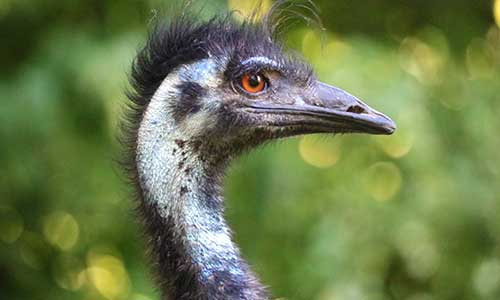
-
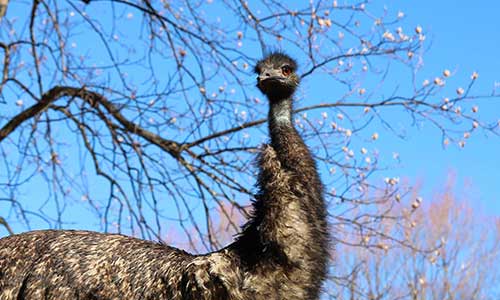
-
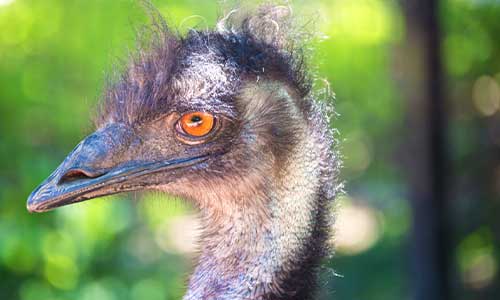
-
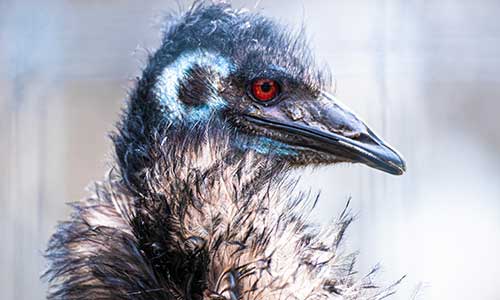
-
 Emu
Emu -
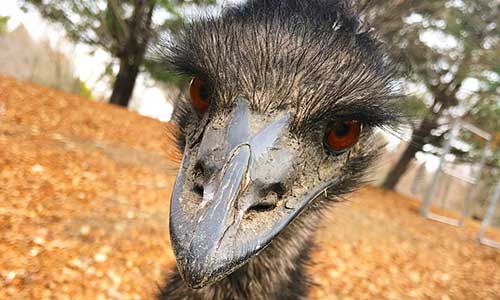
-
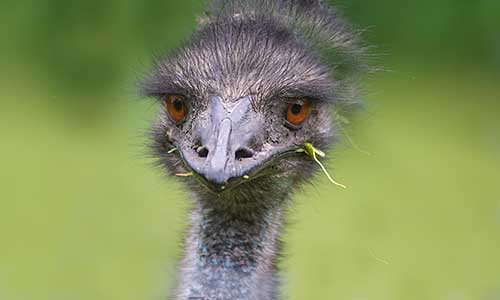
-
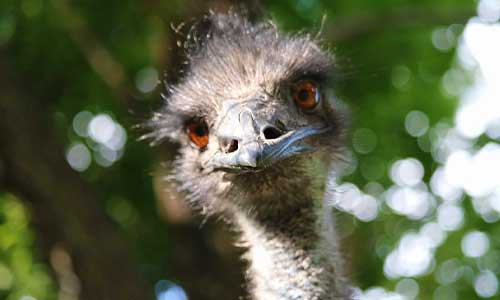
-
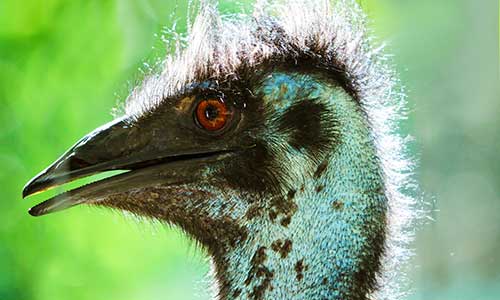
-
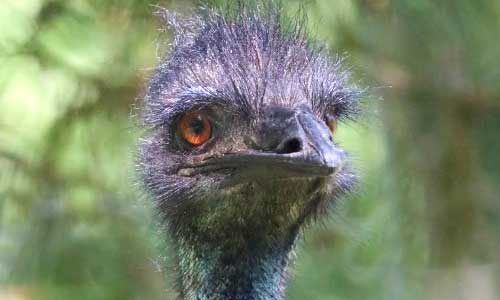
About the Emu

Geographic Range:
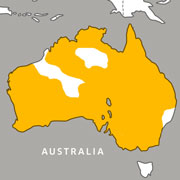
Class: Aves
Order: Struthioniformes/Casuariiformes
Family: Dromaiidae
Genus: Dromaius
Species: novaehollandiae
The emu is the largest bird native to Australia, growing to be about six feet tall. The emu has shaggy brown to grey-brown feathers on its body and small wings. The Emu can run up to 30 miles per hour, changing direction while moving at top speed to evade predators. The emu’s call consists of grunts, drumming, and booming—sounds made possible by an inflatable sack in its neck.
Emu Facts
Appearance:
The emu is a large, flightless bird with shaggy brown to grey-brown feathers; the shafts at the tips of its wing feathers are black; its head and neck are mostly bare and bluish-black in color. Emus have two sets of eyelids: one for blinking and the other to keep dust out.
The emu has small wings on the sides of its body; its feet are three-toed with no toes at the rear of its feet. Its specialized pelvic limb muscles help it run quickly. The body mass of these muscles is equal to the body mass of the wing muscles of flight birds. The emu is the only bird to have calf muscles.
Size:
Weight: 66 to 100 pounds—Emus are the tallest bird native to Australia.
Height: 6 feet
Females are larger and heavier than males.
Habitat/Range:
Emus live mainly in savannah woodlands of Australia; they avoid heavily populated areas, dense forests and arid areas.
Diet:
Food type changes with the seasons, but emus typically eat growing shoots of plants, fruits, insects, small animals, and animal droppings. Emus are seed dispersers.
Reproduction:
Emus form breeding pairs in December or January and remain a pair for approximately five months. In May or June, they mate every one to two days. Females lays 11 to 20 eggs every two to three days, and the male incubates the eggs for eight weeks. The male incubates the eggs, and during this time he does not eat, drink or defecate. He stands up only to turn the eggs. For survival, he relies on stored body fat and sipping morning dew that can be reached from the nest. Over the weeks of incubation, the male loses about 30 percent of his body fat. After having laid the eggs, the female may mate with other males and lay other clutches. The male emu protects the new chicks, which leave the nest within a few days of hatching and are full-grown within one to two years.
Behavior:
The emu travels to find food and can run up to 30 miles per hour. Emus can change direction while running at top speed to escape predators. More often found as solitary bird, emus sometimes form flocks in order to cooperatively search for food. Made possible by an inflatable sac in the neck, the emu’s call consists of grunts, drumming, and booming. During cold weather, their inner layer of feathers provides warmth. They also have multi-folded nasal passages to warm cold air before it goes to the lungs. In hot weather, emus pant to keep cool.
Habitat/Range:
Australia
Emus live mainly in savannah woodlands; they avoid heavily populated areas, dense forests and arid areas.
Predators:
Emus are pray for eagle, lizards, dingoes, and non-native foxes, cats and dogs.
Life Expectancy:
Wild: around 10 years
Captive: 20 or more years
You Can Find This Animal in the Outback Trail
Second to One
Emus are the second largest living bird in the world (the ostrich is the largest).
You May Also Like
At Franklin Park Zoo:
At Stone Zoo:











